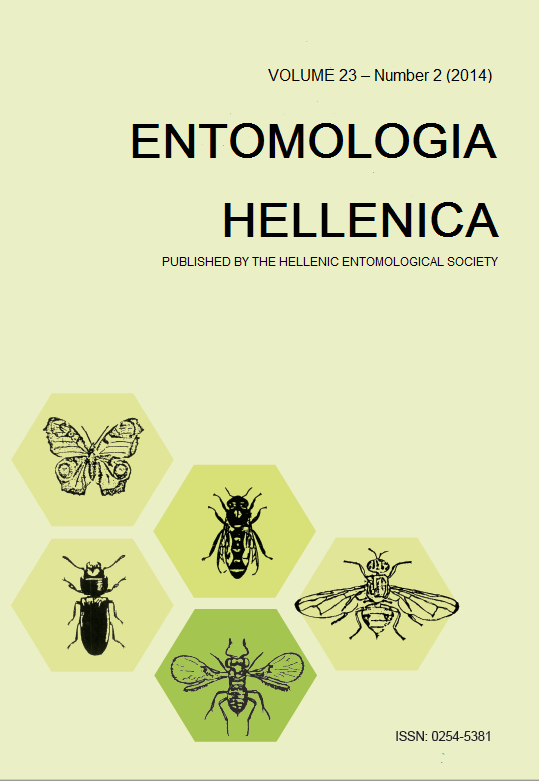The entomofauna on the leaves of two forest species, Fagus sylvatica and Corylus avelana, in Menoikio Mountain of Serres

Abstract
The insect species composition and their abundance were investigated on the leaves of beech (Fagus sylvatica, Fagaceae) and hazel trees (Corylus avelana, Betulaceae) in the mixed forest located in Menoikio Mountain of Serres. For that purpose from April to June 2011 leaves were collected from the two forest species at weekly intervals and the insects found were reared in the laboratory under outdoor conditions and checked every day till their pupation and adult emergence. A total of 27 insect species was recorded. These insects belonged to seven orders. Fifteen Coleoptera species, 4 Hemiptera species, 3 of Lepidoptera species, 2 of Hymenoptera species and 1 species to the orders Diptera, Neuroptera, and Ephemeroptera were found. The results disclose that the number of insect species found on leaves of hazel trees was fewer than the insect species on beech trees. On hazel trees the population of Lymantria dispar (Lepidoptera: Lymantriidae) was much higher than in beech trees. The species of Coleoptera collected from hazel trees were Phyllobius pyri (Coleoptera: Curculionidae), Rhynchaenus populi (Coleoptera: Curculionidae) and Agiotes acuminatus (Coleoptera: Elateridae). In beech trees the insect species found more frequently were Rhynchaenus fagi (Coleoptera: Curculionidae), Phyllobius pyri (Coleoptera: Curculionidae) and Anobium punctatum (Coleoptera: Anobiidae). The largest population of insects was observed at the end of spring, because the life cycle of the foliage insects were synchronized with leaf- flushing of the foliage.
Article Details
- How to Cite
-
Stoikou, M. G., & Karanikola, P. P. (2014). The entomofauna on the leaves of two forest species, Fagus sylvatica and Corylus avelana, in Menoikio Mountain of Serres. ENTOMOLOGIA HELLENICA, 23(2), 65–73. https://doi.org/10.12681/eh.11538
- Issue
- Vol. 23 No. 2 (2014)
- Section
- Articles

This work is licensed under a Creative Commons Attribution-NonCommercial-ShareAlike 4.0 International License.
Authors who publish with this journal agree to the following terms:
Authors retain copyright and grant the journal right of first publication with the work simultaneously licensed under a Creative Commons 4.0 license.
Authors are able to enter into separate, additional contractual arrangements for the non-exclusive distribution of the journal's published version of the work (e.g. post it to an institutional repository or publish it in a book), with an acknowledgement of its initial publication in this journal. Authors are permitted and encouraged to post their work online (preferably in institutional repositories or on their website) prior to and during the submission process, as it can lead to productive exchanges, as well as earlier and greater citation of published work.


